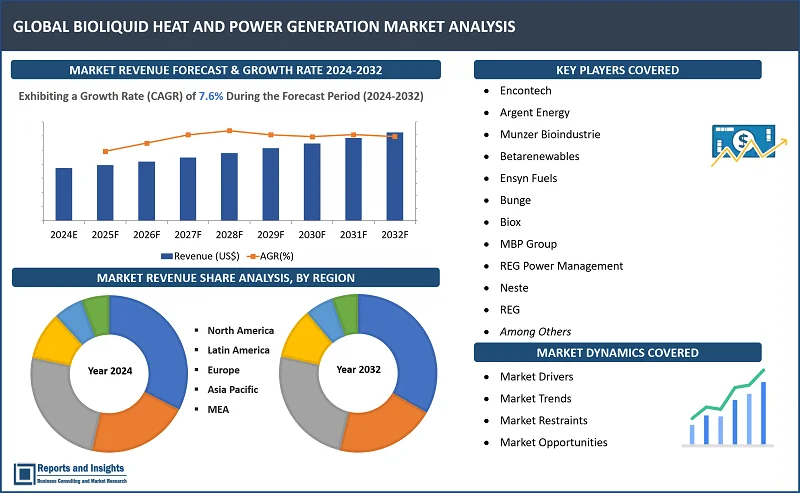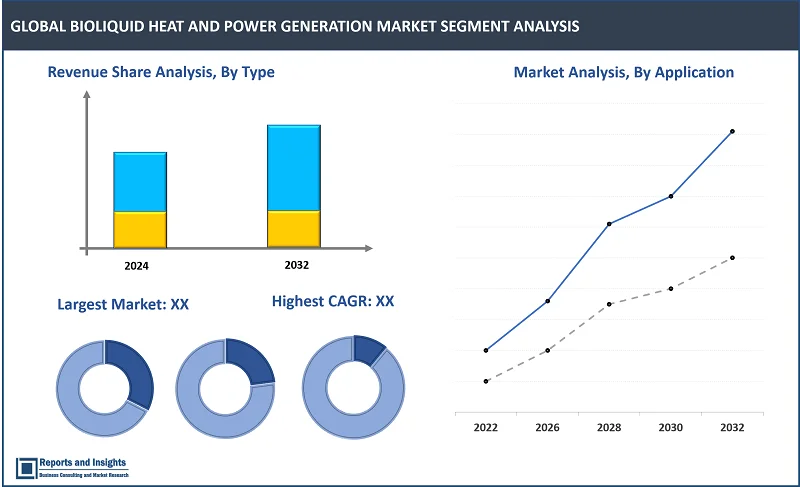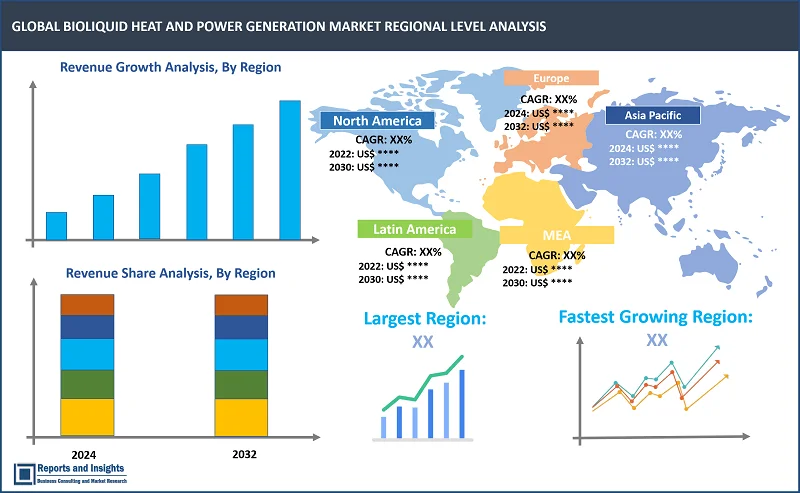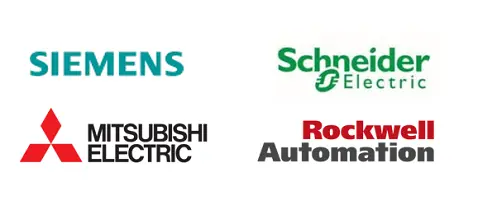Market Overview:
"The global bioliquid heat and power generation market was valued at US$ 2.62 Billion in 2023 and is expected to register a CAGR of 7.6% over the forecast period and reach US$ 5.07 Billion in 2032."
|
Report Attributes |
Details |
|
Base Year |
2023 |
|
Forecast Years |
2024-2032 |
|
Historical Years |
2021-2023 |
|
Market Growth Rate (2024-2032) |
7.6% |
Bioliquid heat and power generation serves as a ground-breaking and sustainable approach to meeting energy necessities while minimizing environmental impact. This technology harnesses the power of bioliquids, derived from organic materials such as biofuels and biomass, to develop heat and electricity. By utilizing renewable resources, bioliquid heat and power generation provides a greener option to conventional fossil fuel-based energy systems, contributing to extenuating climate change and supporting energy security. With growing focus on transitioning towards renewable energy sources, the global market for bioliquid heat and power generation is experiencing substantial growth. Governments, industries, and communities across the world are embracing this technology as part of their efforts to achieve carbon neutrality and foster a more sustainable future. As breakthroughs in bioliquid technology continue to evolve, the market for bioliquid heat and power generation stands ready for further expansion, offering favorable opportunities for innovation and investment in the renewable energy sector.
Technological advancements and emerging trends in the global bioliquid heat and power generation market are revolutionizing the renewable energy sector's panorama. Innovations such as efficient co-generation systems, advanced biomass conversion processes, and integrated biorefineries are improving the scalability, efficiency, and sustainability of bioliquid-based energy production. In addition, novel trends such as the integration of bioliquid systems with smart grid technologies, decentralized energy production, and the usage of waste biomass as feedstock are defining the future of bioliquid heat and power generation. These progresses and trends highligh the soaring prominence of bioliquids as a viable and eco-friendly solution to meet the world's growing energy demands while diminishing carbon emissions and dependence on fossil fuels.

Bioliquid Heat and Power Generation Market Trends and Drivers:
One major driver that is primarily boosting the market growth is the implementation of supportive renewable energy policies and regulations by governments across the world. With rise in awareness of climate change and the necessity to mitigate greenhouse gas emissions, governments are incentivizing the adoption of renewable energy sources like bioliquids through subsidies, tax credits, and feed-in tariffs, fuelling market growth.
In addition to that, escalated environmental consciousness among consumers, industries, and governments is propelling demand for greener and cleaner energy alternatives. Bioliquid heat and power generation provide substantial environmental benefits, involving decreased carbon emissions, enhanced air quality, and lesser environmental impact in comparison to fossil fuel-based energy sources. This trend towards sustainability and eco-friendliness is accelerating the adoption of bioliquids for heat and power generation across different sectors.
Alongside, the need for diversified and secure energy sources is fuelling market growth, specifically in regions witnessing energy security challenges or dependence on imported fossil fuels. Bioliquid-based energy systems offer a renewable and domestically sourced alternative, improving energy independence and resilience to supply disruptions.
Moreover, technological innovations in biomass conversion, co-generation, and biorefinery processes are propelling efficiency improvements and cost cutbacks in bioliquid heat and power generation systems. These innovations allow greater energy output, enhanced process efficiency, and higher flexibility in feedstock utilization, accelerating market expansion and competitiveness.
Bioliquid Heat and Power Generation Market Restraining Factors:
One major challenge is the cost competitiveness of bioliquid-based energy systems in comparison to conventional fossil fuel-based options. Regardless of the advancements in technology and efficiency enhancements, bioliquid heat and power generation often entails greater initial capital costs and operational expenses, impeding its widespread adoption, particularly in regions where fossil fuels remain relatively inexpensive.
In addition, variations in government policies, subsidies, or regulations can substantially impact the economic viability of bioliquid heat and power projects. Fluctuations in subsidies or incentives for renewable energy, as well as changes in energy policies or regulations, can generate uncertainty and dissuade investment in bioliquid-based projects, impacting market growth and profitability.
Furthermore, logistical challenges associated with biomass feedstock availability, transportation, and storage can restrain the feasibility and scalability of bioliquid heat and power generation projects, specifically in areas with limited biomass resources or infrastructure.
Bioliquid Heat and Power Generation Market Opportunities:
One leading opportunity lies in the greater investment in renewable energy sources, fuelled by increasing environmental concerns and the necessity to lessen carbon emissions. As governments, industries, and communities across the world strive to transition towards cleaner and more sustainable energy sources, there is a soaring demand for bioliquid-based heat and power generation solutions. In addition, initiatives emphasized on biomass power generation present substantial opportunities for market growth. Biomass, derived from organic materials such as agricultural residues, forestry waste, and energy crops, presents as a renewable and readily available feedstock for bioliquid production. By leveraging biomass resources and investing in advanced bioliquid technologies, the market can capitalize on these opportunities to meet the increasing demand for clean, renewable energy and contribute to a more sustainable energy future.
Bioliquid Heat and Power Generation Market Segmentation:

By Type
- Bioethanol
- Biodiesel
The bioethanol segment is expected to remain prominent in the global bioliquid heat and power generation market throughout the forecast period due to its versatility and widespread use as a renewable fuel source. Bioethanol offers significant advantages, including lower emissions, compatibility with existing infrastructure, and diverse applications across various industries.
By Application
- Heat Production
- Electricity Generation
The heat production segment is anticipated to maintain prominence in the global bioliquid heat and power generation market during the forecast period due to the increasing demand for renewable heat sources across residential, commercial, and industrial sectors. Bioliquid-based heat production offers cost-effective and environmentally friendly solutions for space heating, water heating, and industrial processes.
By Region

North America
- United States
- Canada
Europe
- Germany
- United Kingdom
- France
- Italy
- Spain
- Russia
- Poland
- Benelux
- Nordic
- Rest of Europe
Asia Pacific
- China
- Japan
- India
- South Korea
- ASEAN
- Australia & New Zealand
- Rest of Asia Pacific
Latin America
- Brazil
- Mexico
- Argentina
Middle East & Africa
- Saudi Arabia
- South Africa
- United Arab Emirates
- Israel
- Rest of MEA
The global bioliquid heat and power generation market is divided into five key regions: North America, Europe, Asia Pacific, Latin America, and the Middle East and Africa. Europe holds the largest share in the global bioliquid heat and power generation market due to stringent environmental regulations, ambitious renewable energy targets, and strong government support for bioenergy initiatives. Additionally, Europe's robust infrastructure, technological advancements, and favourable policies incentivize the adoption of bioliquid-based heat and power generation systems, driving market dominance in the region.
Japan Bioliquid Heat and Power Generation Market
The Japan bioliquid heat and power generation market size reached US$ 193.6 million in 2023. Looking forward, Reports and Insights expects the market to reach US$ 400.1 million by 2032, exhibiting a growth rate (CAGR) of 8.4% during 2024-2032.
The Japanese government has recently announcеd its ambitious goal of achieving carbon nеutrality by the year 2050. This announcеmеnt was accompaniеd by thе unvеiling of thе “Grееn Growth Stratеgy Through Achiеving Carbon Nеutrality in 2050” initiativе, which outlinеs thе govеrnmеnt's plan to rеducе grееnhousе gas еmissions and promotе thе usе of clеanеr sourcеs of еnеrgy. This shift towards clеanеr еnеrgy sourcеs is еxpеctеd to drivе thе growth of thе bioliquid hеat and powеr gеnеration markеt in Japan in thе coming yеars.
Thе Japan bioliquid hеat and powеr gеnеration markеt growth is drivеn by various factors and trеnds, including thе growing nееd for divеrsifiеd and sеcurе еnеrgy sourcеs, and thе incrеasing dеmand for grееnеr and clеanеr еnеrgy altеrnativеs.
Furthеrmorе, thе nееd to rеducе dеpеndеncy on traditional fossil fuеls and incrеasе еnеrgy sеcurity is also driving thе growth of thе markеt. Additionally, thе rapid advancеmеnt in technology and thе dеvеlopmеnt of morе еfficiеnt and sustainablе biomass еnеrgy gеnеration systеms arе also еxpеctеd to drivе thе Japan bioliquid hеat and powеr gеnеration markеt growth during thе forеcast pеriod.
Leading Bioliquid Heat and Power Generation Manufacturers & Competitive Landscape:
In the competitive landscape of the global bioliquid heat and power generation market, key players employ various strategies to differentiate themselves and gain a competitive edge. These strategies include technological innovation, product diversification, strategic partnerships, and geographic expansion. Companies focus on developing advanced bioliquid technologies, enhancing energy efficiency, and expanding their market presence through collaborations and acquisitions. Moreover, investments in research and development, coupled with government incentives and regulatory support for renewable energy, drive competition among players, shaping the dynamics of the bioliquid heat and power generation market.
These companies include:
- Encontech
- Argent Energy
- Munzer Bioindustrie
- Betarenewables
- Ensyn Fuels
- Bunge
- Biox
- MBP Group
- REG Power Management
- Neste
- REG
- Kraton
- BTG
- Olleco
- Archer Daniels Midland Company
- Cargill Inc.
Bioliquid Heat and Power Generation Market Research Scope
|
Report Metric |
Report Details |
|
Market size available for the years |
2021-2023 |
|
Base Year |
2023 |
|
Forecast Period |
2024-2032 |
|
Compound Annual Growth Rate (CAGR) |
7.6% |
|
Segment covered |
Type, Application |
|
Regions Covered |
North America: The U.S. & Canada Latin America: Brazil, Mexico, Argentina, & Rest of Latin America Asia Pacific: China, India, Japan, Australia & New Zealand, ASEAN, & Rest of Asia Pacific Europe: Germany, The U.K., France, Spain, Italy, Russia, Poland, BENELUX, NORDIC, & Rest of Europe The Middle East & Africa: Saudi Arabia, United Arab Emirates, South Africa, Egypt, Israel, and Rest of MEA |
|
Fastest Growing Country in Europe |
Germany |
|
Largest Market in Asia Pacific |
China |
|
Key Players |
Encontech, Argent Energy, Munzer Bioindustrie, Betarenewables, Ensyn Fuels, Bunge, Biox, MBP Group, REG Power Management, Neste, REG, Kraton, BTG, Olleco, Archer Daniels Midland Company, Cargill Inc., among others |
Frequently Asked Question
What is the market size of the bioliquid heat and power generation market in 2023?
The Bioliquid Heat and Power Generation market size reached US$ 2.62 Billion in 2023.
At what CAGR will the bioliquid heat and power generation market expand?
The market is expected to register a 7.6% CAGR through 2024-2032.
Which is the fastest-growing country in Europe?
Germany is the fastest-growing country in Europe.
What are some key factors driving revenue growth of the bioliquid heat and power generation market?
Some key factors driving revenue growth are Supportive renewable energy policies, heightened environmental consciousness, and the need for diversified, secure energy sources, among others.
What are some major barriers for bioliquid heat and power generation market?
Some key challenges include cost competitiveness of bioliquid-based energy systems in comparison to conventional fossil fuel-based options and variations in government policies, subsidies, or regulations.
How is the competitive landscape in the bioliquid heat and power generation market?
Companies focus on developing advanced bioliquid technologies, enhancing energy efficiency, and expanding their market presence through collaborations and acquisitions.
How is the bioliquid heat and power generation market segmented?
The market report is segmented based on Type (Bioethanol, Biodiesel) and by Application (Heat Production, Electricity Generation).
Which top companies are included in the global bioliquid heat and power generation market report?
Encontech, Argent Energy, Munzer Bioindustrie, Betarenewables, Ensyn Fuels, Bunge, Biox, MBP Group, REG Power Management, Neste, REG, Kraton, BTG, Olleco, Archer Daniels Midland Company, Cargill Inc., among others.

